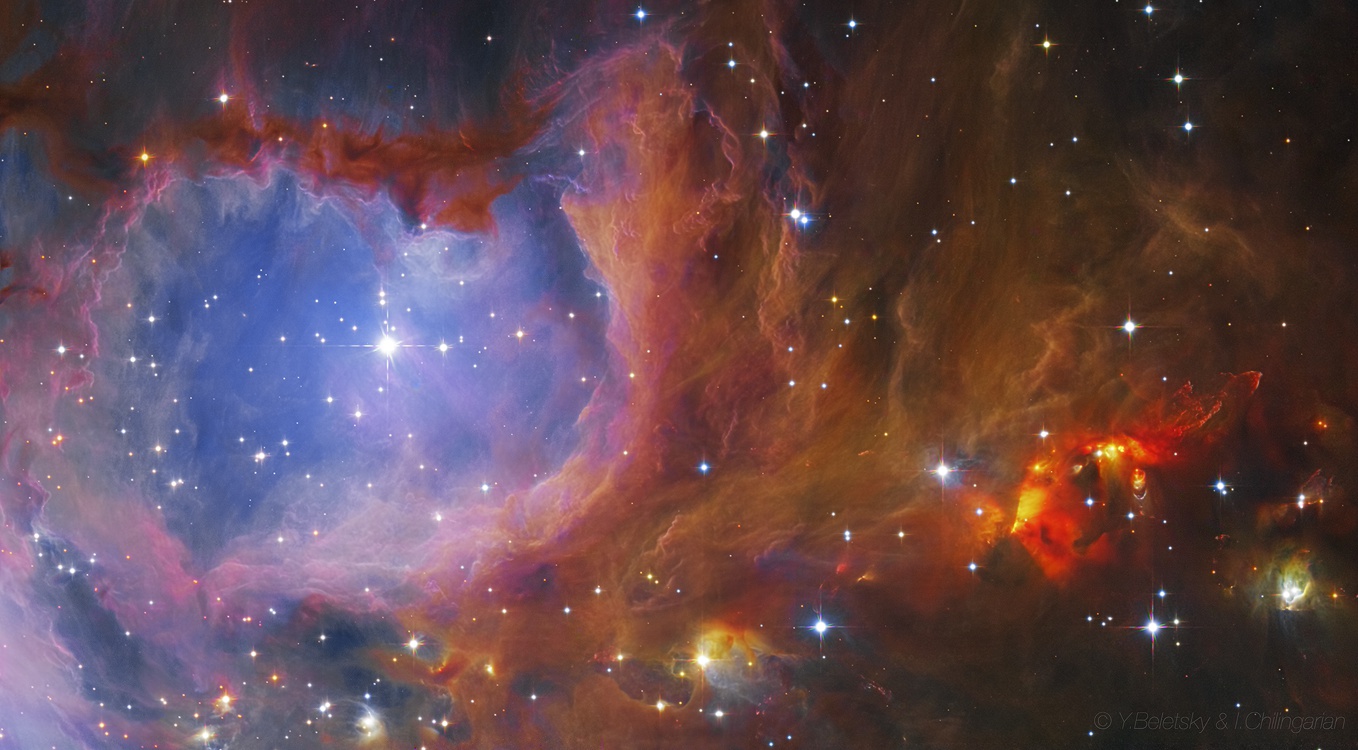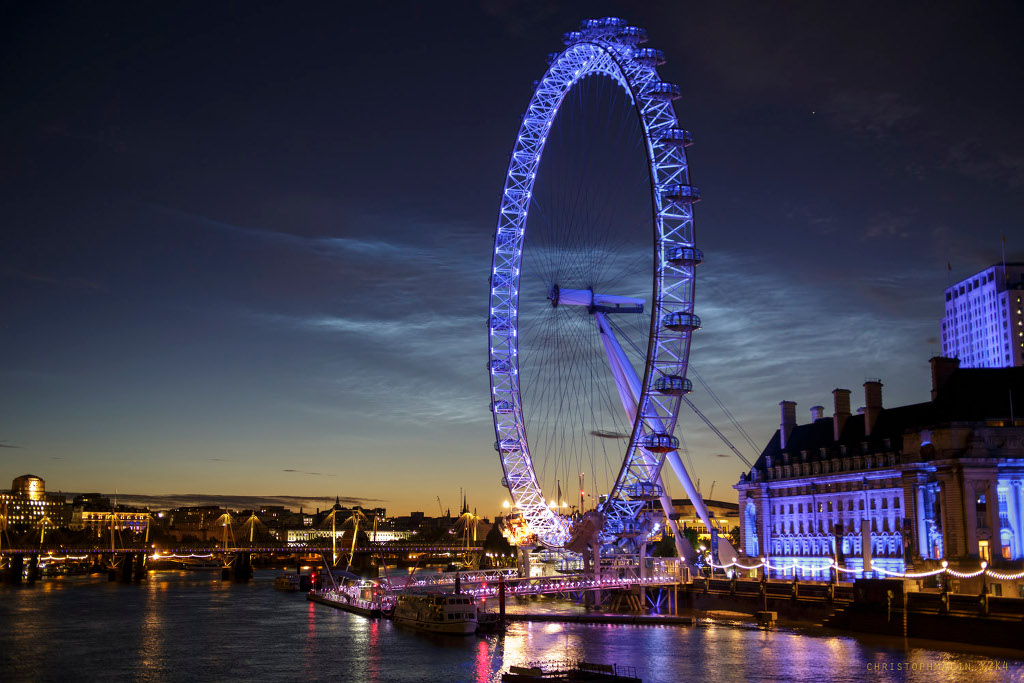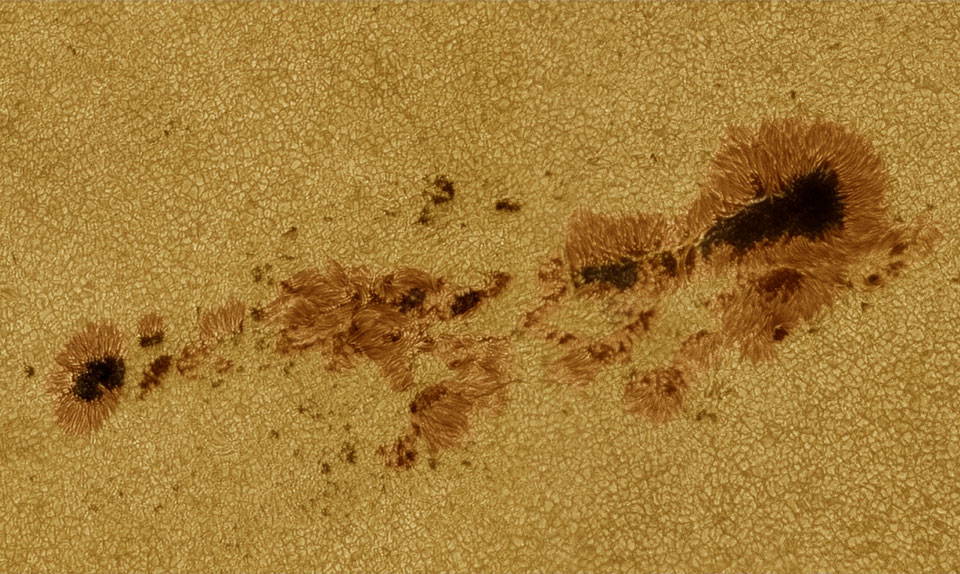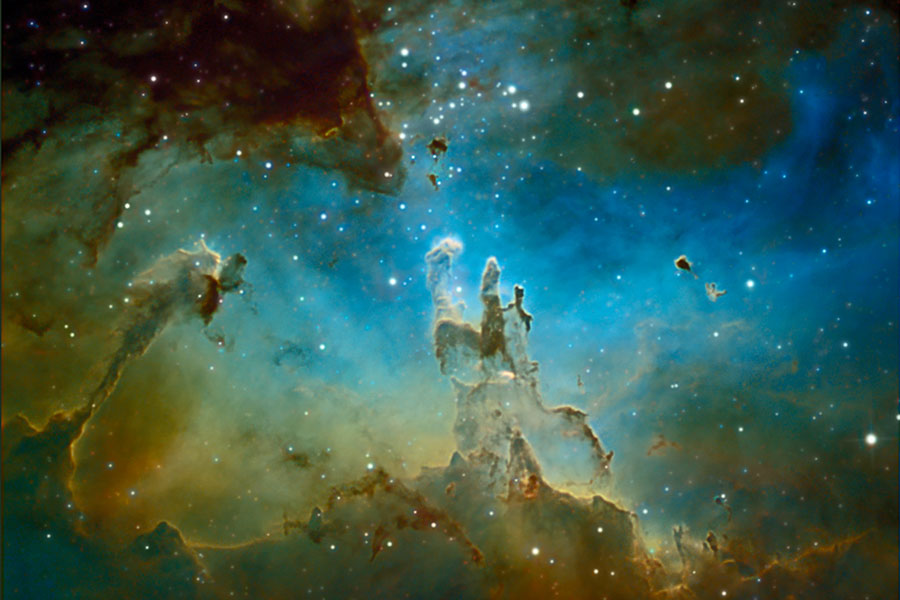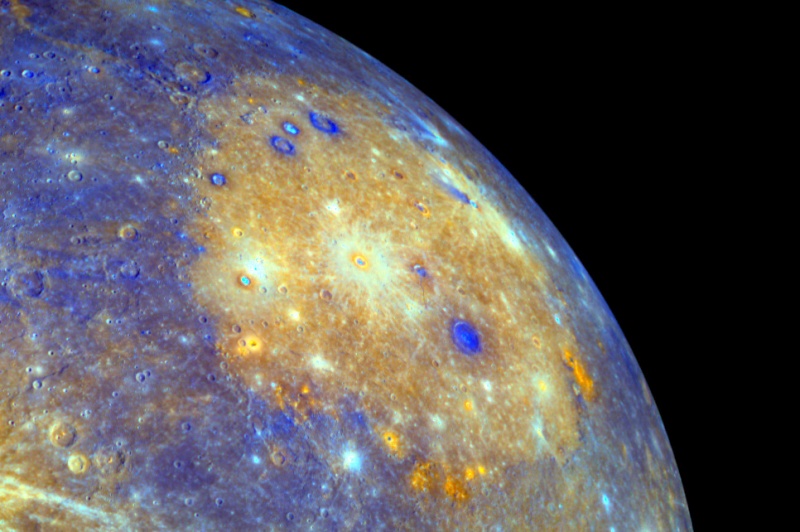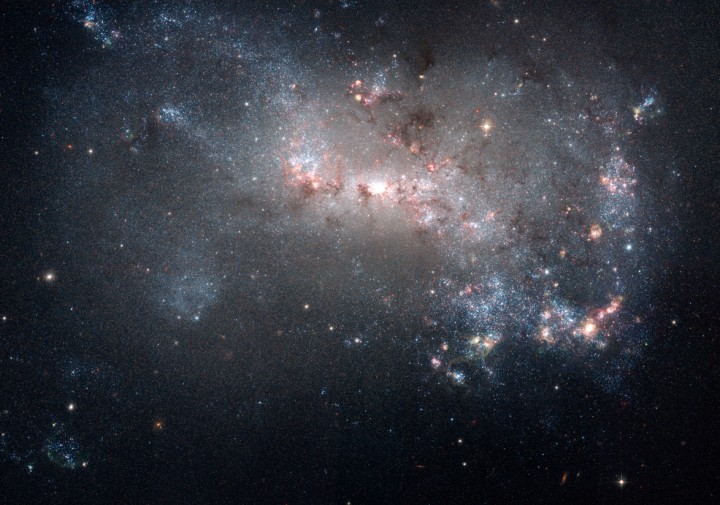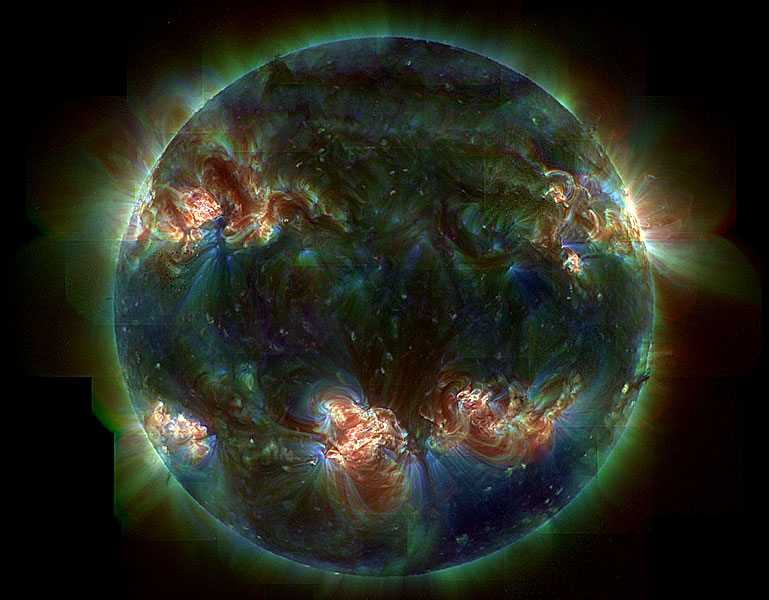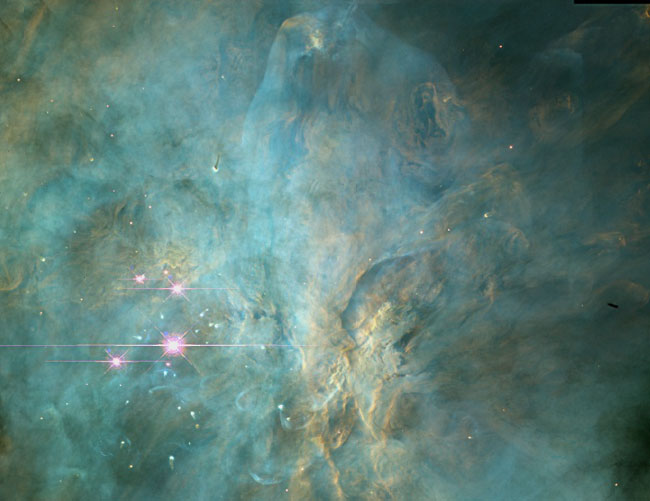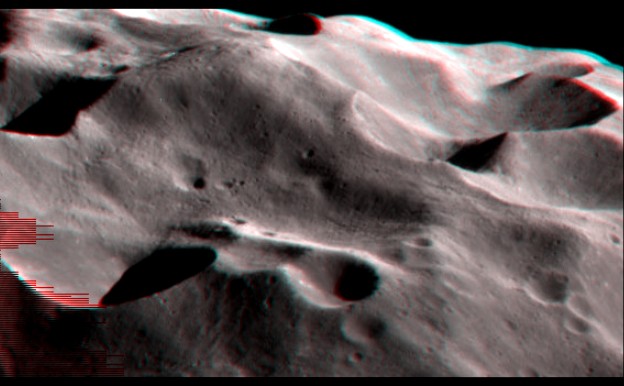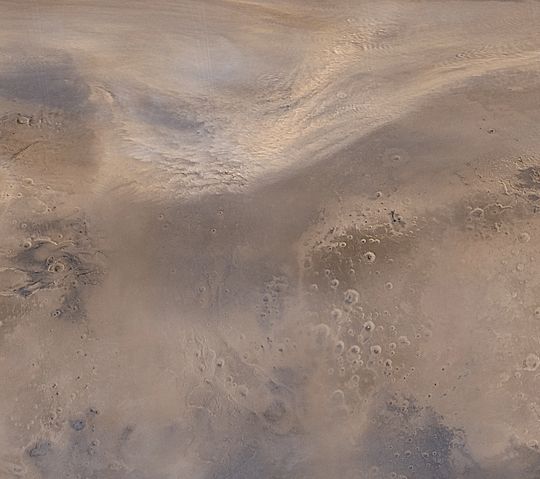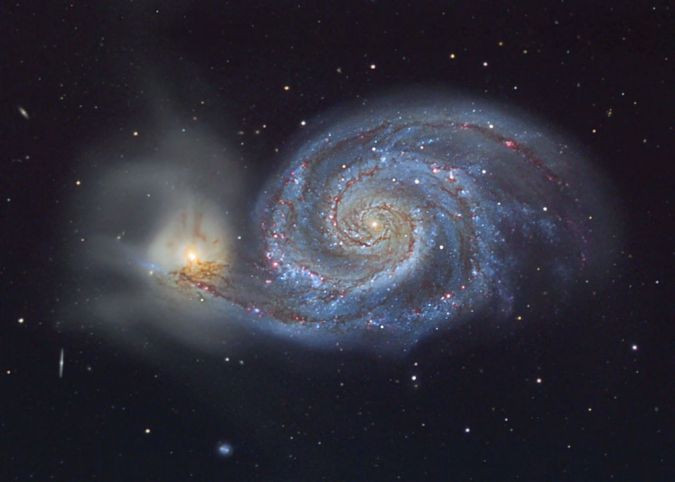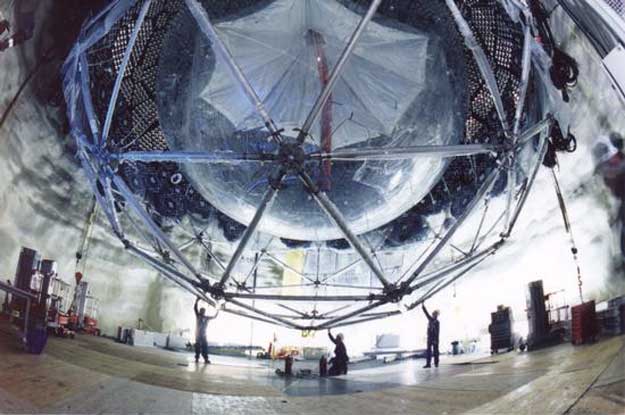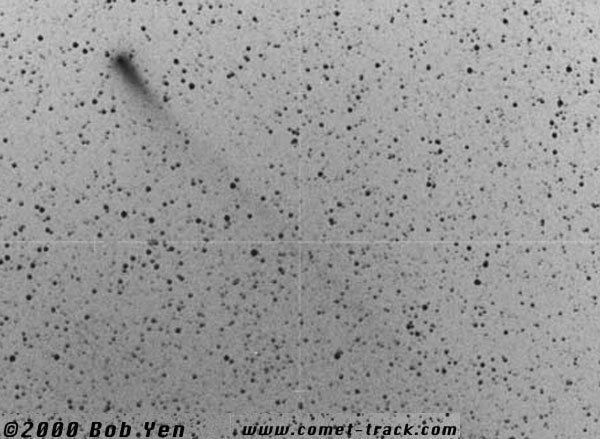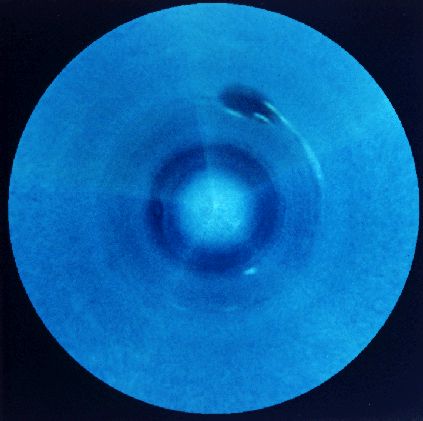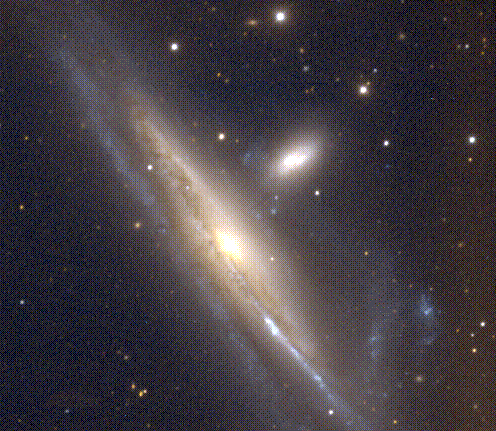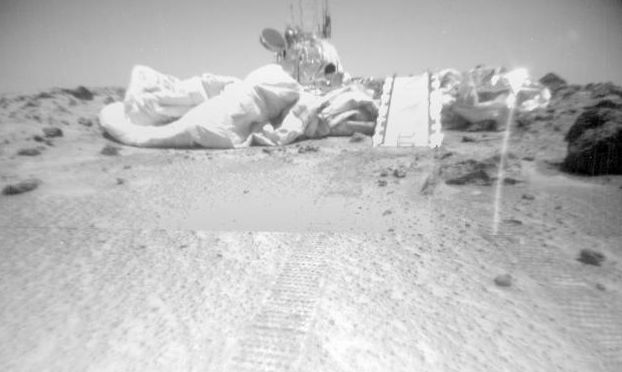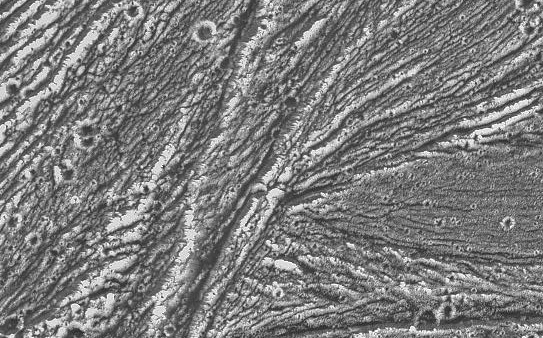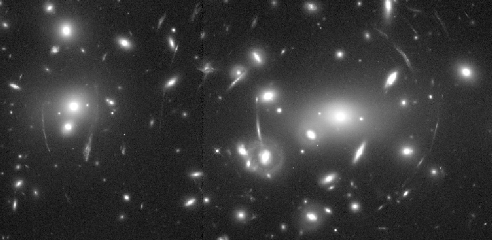| << Previous | Index | Next >> |
2015
2014 This scene from the early morning hours of July 3 looks out across the River Thames from the Westminster Bridge. Part of a luminous timelapse video (vimeo), the frame captures a sight familiar in London, the nighttime glow of the London Eye. But a not-so-familiar sight is shining in the still dark sky above, widespread noctilucent clouds. From the edge of space, about 80 kilometers above Earth's surface, the icy clouds can still reflect sunlight even though the Sun itself is below the horizon as seen from the ground. Usually spotted at high latitudes in summer months the diaphanous apparitions are also known as polar mesospheric clouds. The seasonal clouds are understood to form as water vapor driven into the cold upper atmosphere condenses on the fine dust particles supplied by disintegrating meteors or volcanic ash. NASA's AIM mission provides daily projections of the noctilucent clouds as seen from space.
2013 One of the largest sunspot regions in recent years is now crossing the Sun. This region of convoluted magnetic fields may well produce a solar flare that releases a cloud of energetic particles into the Solar System. Were a very powerful cloud to impact the Earth's magnetosphere, it could be dangerous to Earth-orbiting astronauts and satellites. Conversely, the impact of even a less energetic cloud might create picturesque aurora. Pictured above is the sunspot region as it appeared two days ago. The rightmost part of this region has been cataloged as AR 11785, while the left part as AR 11787. The darkest sunspot regions contain nearly vertical magnetic fields and are called umbras, while the surrounding bronze regions -- more clearly showing stringy magnetic flux tubes -- are called penumbras. Churning solar granules, many about 1000 km across, compose the yellow background region. No one knows what this sunspot region will do, but space weather researchers are monitoring it closely.
2012
Click to play embedded YouTube video.
Video Credit: Matt Harding & Melissa Nixon; Music: Trip the Light
2011 Most bright stars in our Milky Way Galaxy reside in a disk. Since our Sun also resides in this disk, these stars appear to us as a diffuse band that circles the sky. The above panorama of a northern band of the Milky Way's disk covers 90 degrees and is a digitally created mosaic of several independent exposures. Scrolling right will display the rest of this spectacular picture. Visible are many bright stars, dark dust lanes, red emission nebulae, blue reflection nebulae, and clusters of stars. In addition to all this matter that we can see, astronomers suspect there exists even more dark matter that we cannot see.
2010
[imghover6=http://apod.nasa.gov/apod/image/1007/Ta ... el900h.jpg]http://apod.nasa.gov/apod/image/1007/Ta ... el900h.jpg[/imghover6]Image Credit & Copyright: Tunç Tezel (TWAN)
2009 What lights up this castle of star formation? The familiar Eagle Nebula glows bright in many colors at once. The above image is a composite of three of these glowing gas colors. Pillars of dark dust nicely outline some of the denser towers of star formation. Energetic light from young massive stars causes the gas to glow and effectively boils away part of the dust and gas from its birth pillar. Many of these stars will explode after several million years, returning most of their elements back to the nebula which formed them. This process is forming an open cluster of stars known as M16.
2008 The sprawling Caloris basin on Mercury is one of the solar system's largest impact basins. Created during the early history of the solar system by the impact of a large asteroid-sized body, the basin spans about 1,500 kilometers and is seen in yellowish hues in this enhanced color mosaic. The image data is from the January 14th flyby of the MESSENGER spacecraft, captured with the MDIS instrument. Orange splotches around the basin's perimeter are now thought to be volcanic vents, new evidence that Mercury's smooth plains are indeed lava flows. Other discoveries at Mercury by NASA's MESSENGER mission include evidence that Mercury, like planet Earth, has a global magnetic field generated by a dynamo process in its large core, and that Mercury's surface has contracted significantly as its core cooled.
2007
2006 Is this our Sun? Yes. Even on a normal day, our Sun is sizzling ball of seething hot gas. Unpredictably, regions of strong and tangled magnetic fields arise, causing sunspots and bright active regions. The Sun's surface bubbles as hot hydrogen gas streams along looping magnetic fields. These active regions channel gas along magnetic loops, usually falling back but sometimes escaping into the solar corona or out into space as the solar wind. Pictured above is our Sun in three colors of ultraviolet light. Since only active regions emit significant amounts of energetic ultraviolet light, most of the Sun appears dark. The colorful portions glow spectacularly, pinpointing the Sun's hottest and most violent regions. Although the Sun is constantly changing, the rate of visible light it emits has been relatively stable over the past five billion years, allowing life to emerge on Earth.
2005 Start with the constellation of Orion. Near Orion's belt is a fuzzy area known as the Great Nebula of Orion or M42. In this nebula is a bright star cluster known as the Trapezium, shown above. New stellar systems are forming there in gigantic globs of gas and dust known as Proplyds. Looking closely at the above picture also reveals that gas and dust surrounding some of the dimmer stars appears to form structures that point away from the brighter stars. The above false color image was made by combining several exposures from the orbiting Hubble Space Telescope.
2004 Get out your red/blue glasses and gaze across the spectacular, cratered terrain of Saturn's icy moon Phoebe in stereo. The dramatic 3-D perspective spans roughly 50 kilometers and is based on two raw, uncalibrated images (N00004840.jpg and N00004838.jpg) from the Cassini spacecraft's narrow angle camera taken during the flyby on June 11 at a range of just over 13,500 kilometers. Phoebe itself is only about 200 kilometers in diameter. Stereo experimenter Patrick Vantuyne noted the substantial overlap in the raw image data and was able to assemble the dramatic view of the overlapping region as a red/blue stereo anaglyph. Looking for a cool project? Stereo glasses can be easily constructed using red and blue plastic for filters. To view this image, the red filter is used for the left eye.
2003 Almost on cue, as Mars nears its closest approach to planet Earth in recorded history, ominous seasonal dust storms are beginning to kick up. Observers worry that the activity may presage the development of a planet wide dust storm, frustrating attempts to view Mars in the coming months, a situation similar to the Red Planet's uncooperative behavior in 2001. In this example, recorded in mid-May by the Mars Global Surveyor spacecraft camera, a dust storm the size of a continent sweeps north and east (toward the upper right) across Mars' northern Acidalia Planitia. Meanwhile, interplanetary robotic explorers Mars Express/ Beagle 2, Nozomi, and the twin Mars Exploration Rovers Opportunity and Spirit, are all bound for Mars and should arrive by early January 2004.
2002 Follow the handle of the Big Dipper away from the dipper's bowl, until you get to the handle's last bright star. Then, just slide your telescope a little south and west and you'll likely find this stunning pair of interacting galaxies, the 51st entry in Charles Messier's famous catalog. Perhaps the original spiral nebula, the large galaxy with well defined spiral structure is also cataloged as NGC 5194. Its spiral arms and dust lanes clearly sweep in front of its companion galaxy (left), NGC 5195. The pair are about 37 million light-years distant and officially lie within the boundaries of the small constellation Canes Venatici. While M51 is visible as a faint, fuzzy patch in binoculars, this sharp color picture was made with a 14 inch telescope and combines digital camera exposures totaling 3 hours and 42 minutes.
2001 The Sudbury Neutrino Observatory (SNO) has been detecting so few neutrinos from the Sun that the Standard Model of fundamental particles in the universe may have to be revised. Pictured above is the SNO as it was being built. Now operating, this large sphere beneath Canada is detecting nearly invisible particles called neutrinos being emitted from the center of the Sun. SNO appears to be measuring a rate expected for all types of neutrinos combined but a decided deficit for the electron neutrino. The results are being interpreted as bolstering previous evidence that different types of neutrinos are changing into each other. The most popular model for fundamental particles, known as the Standard Model, did not predict such schizophrenic neutrinos. Implications include that neutrinos have mass and therefore comprise some of the dark matter in the universe, although probably not a cosmologically significant amount.
2000 Comet LINEAR's tail appears to be extending. Many sky watchers are closely following Comet C/1999 S4 LINEAR and wondering if it will develop an impressive tail or become visible to the naked eye later this month. So far, the unpredictable comet is moving oddly indicating that exploding caverns of heated gas are causing the comet to shift slightly in its orbit around the Sun. This volatility contributes to Comet LINEAR newly visible two-degree tail, discernable in the above photographic negative taken Friday from California. Current brightness estimates indicate that Comet LINEAR will just barely become visible without binoculars in northern skies in the days surrounding July 23 during the early evening hours.
1999 Neptune, the Solar System's outermost gas giant planet, is 30 times farther from the Sun than Earth. Twelve years after a 1977 launch, Voyager 2 flew by Neptune and found surprising activity on a planet that receives only 3 percent as much sunlight as Jupiter. In its brief but tantalizing close-up glimpse of this dim and distant world, the robot spacecraft recorded pulses of radio emission, zonal cloud bands, and large scale storm systems with up to 1500 mile per hour winds - the strongest measured on any planet. This mosaic of 5 Voyager images shows Neptune's Southern Hemisphere. Cloud bands and the Earth-sized, late "Great Dark Spot" with trailing white clouds located at about 22 degrees southern latitude are clearly visible. The distance from the Great Dark Spot feature to Neptune's South Pole (image center) is about 17,000 miles.
1998 This dramatic image of an interacting pair of galaxies was made using the 1.5 meter telescope at the Cerro Tololo Inter-American Observatory near La Serena, Chile. NGC 1531 is the background galaxy with a bright core just above center and NGC 1532 is the foreground spiral galaxy laced with dust lanes. The pair is about 70 million light-years away in the southern constellation Eridanus. These galaxies lie close enough together so that each feels the influence of the other's gravity. The gravitational tug-of-war has triggered star formation in the foreground spiral as evidenced by the young, bright blue star clusters along the edge of the front spiral arm. Though the spiral galaxy in this pair is viewed nearly edge-on, astronomers believe the system is similar to the face-on spiral and companion known as M51, the Whirlpool Galaxy.
1997 The robot rover Sojourner sees Mars from the perspective of a house cat. During the 7 month cruise to Mars aboard the Pathfinder spacecraft, Sojourner measured only seven inches tall in a stowed position but prowling the martian landscape it has stretched to its full height of 1 foot (30 centimeters). In this mosaic of images Sojourner's cameras look back on its mother ship, now the Sagan Memorial Station, which seems to loom above it. The deployment ramp is visible along with deflated airbags, instrumentation masts and tracks left in the martian soil by the robot's six cleated 5-inch aluminum wheels. So far the rover has been directed to analyze soil and the composition of two rocks, Barnacle Bill (seen just to the right of the ramp) and Yogi. Human operators select Sojourner's targets but the robot rover is relied on to navigate to its destination autonomously. Click here to download a movie gif of Sojourner creeping toward Yogi.
1996 Ganymede's surface is slowly being pulled apart. This photo of Ganymede was released earlier today by the Galileo team at NASA. The Galileo Spacecraft arrived at Jupiter in December 1995. In late June, the spacecraft passed within 10,000 kilometers of Ganymede's icy surface, and took pictures showing complex surface details for the first time. The line-like features in this photo are sunlit ridges rising above Ganymede's ice-plains. The circular features are impact craters. Ganymede is the largest moon of Jupiter and hence the largest of the four Galilean satellites: Io, Europa, Ganymede, and Callisto.
1995 Sometimes one of the largest concentrations of mass known can act like a lens. Almost all of the bright objects in this image are galaxies in the cluster known as Abell 2218. The cluster is so massive and so compact that it bends light from galaxies that lie behind it, causing many of them to appear as stretched out arcs. Many dim, elongated arcs are visible on this photograph. This picture was taken with the Wide Field Planetary Camera 2 on board the Hubble Space Telescope.
| << Previous | Index | Next >> |
